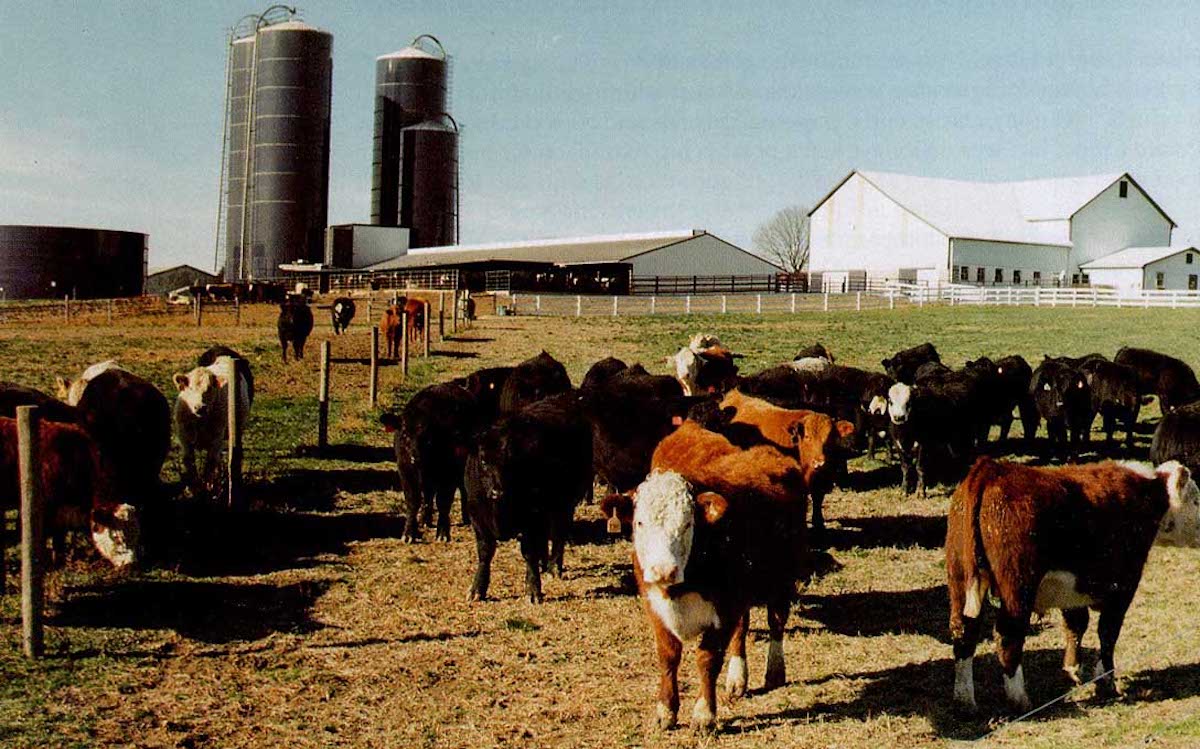Eliminating farms and restoring areas now dedicated to livestock and feed would reduce CO2 emissions by 68 percent.
«Usually the estimates of the environmental benefits deriving from the elimination of farms focus only on one aspect at a time – such as CO2, methane (N2O) or nitrous oxide (CH4) emissions, ed. – so the potential for more radical change remains underestimated», the study authors state.
«In this research, however, we quantified the full potential, combining the long-term effects of reducing emissions with the recovery of soil biomass».
The hypothesized scenarios are essentially three: complete and immediate elimination of all farms; a more gradual elimination over 15 years; a version of the two previous cases where specific products of animal origin are abandoned (for example beef).
The result, eliminating the livestock sector, is «a reduction of 25 gigatonnes of CO2 emissions of anthropogenic origin every year, or half the reduction in net emissions that we need to limit heating to 2 degrees».
Furthermore, its complete elimination would stop the increase of greenhouse gases in the atmosphere for the next 30 years. By the end of the century, net emissions would thus be reduced by 1,350 gigatonnes of CO2. «For comparison, the total anthropogenic CO2 emissions since industrialization to date are 1,650 giga tons», Eisen and Brown explain.
To be truly effective, the elimination of farms should go hand in hand with the restoration of native vegetation on the areas now used for grazing animals and the cultivation of their feed, which occupy 30 percent of the earth’s surface.
«The impact will be greatest in the period between 2030 and 2060 when the recovery of biomass. Reaches its peak, slowing the increase in CO2 levels in the atmosphere», they say. Doing so would see a 68 percent reduction in CO2 emissions by 2100, as well as an exponential lowering of N2O and CH4 levels.
Ruminants emit 90 percent of all livestock emissions
The study then goes into more detail, assuming different scenarios for the gradual elimination of various elements, such as the consumption of meat by ruminants (therefore cattle, sheep, and goats).
This is because even though they provide less than 19 percent of the protein, this group of animals is responsible for 90 percent of all livestock emissions.
«Eliminating the consumption of a kilo of beef is equivalent to a reduction in emissions of 297 kilos of CO2. 38 percent of this value derives from the reduction of emissions and 62 percent derives from the restoration of biomass», they continue. «A kilo of beef, for example, has the same impact on emissions as driving 1,172 kilometers in a car», the researchers conclude.
The limits of the study on farms
The researchers themselves admit that the study still has limitations. For example, the economic and social repercussions that could arise from a global transition to a plant-based diet are not taken into consideration.
«Investments would probably be needed to ensure an income for the people who now work in the livestock sector […]. And others would also be needed to ensure food security in areas where access to plant food is more difficult», Eisen and Brown write.
«But in both cases, these investments should be compared to the economic and humanitarian consequences caused by global warming».
It should also be noted that Patrick O. Brown, in addition to being a professor emeritus at the American University of Stanford, is also the CEO of Impossible Foods, a company that produces vegetable alternatives to meat. Michael Eisen, on the other hand, is a consultant for the same company, so both have financial interests at stake.
From a scientific point of view, however, the study passed the peer review or the critical review of other experts in the field.
Global demand for animal products will grow by 70% by 2050
By 2050, the researchers conclude, global demand for animal products is estimated to grow by 70 percent.
«If the entire world population started eating like in industrialized countries, 35 million square kilometers would be needed to support the needs of all livestock, an area equivalent to that of Africa and Australia, combined», Eisen and Brown point out.
Even in the case of a reduction in emissions from other sources, decreasing those deriving from the livestock sector is essential if we want to limit global warming to 1.5 degrees.
«It is shocking to hear that a change in food production and our consumption is not at the top of strategies against the climate crisis», the researchers denounce.
This is the case, for example, of methane: the livestock sector is now responsible for 40 percent of world emissions of N2O, but their role is still lacking in international negotiations.
For example, during COP26, the 26th UN climate conference, more than 100 countries signed up to the Global methane pledge, a pact aimed at reducing methane emissions by 30 percent by 2030. But nothing has been done. mention of the livestock sector.
For this reason, the researchers point out that no climate action can be truly effective if implemented alone: the transition from fossil sources, the transition to renewable sources, and the elimination of farms must be addressed simultaneously. Focusing on just one of these three aspects will not be enough to win the challenge of the century.









Show Comments